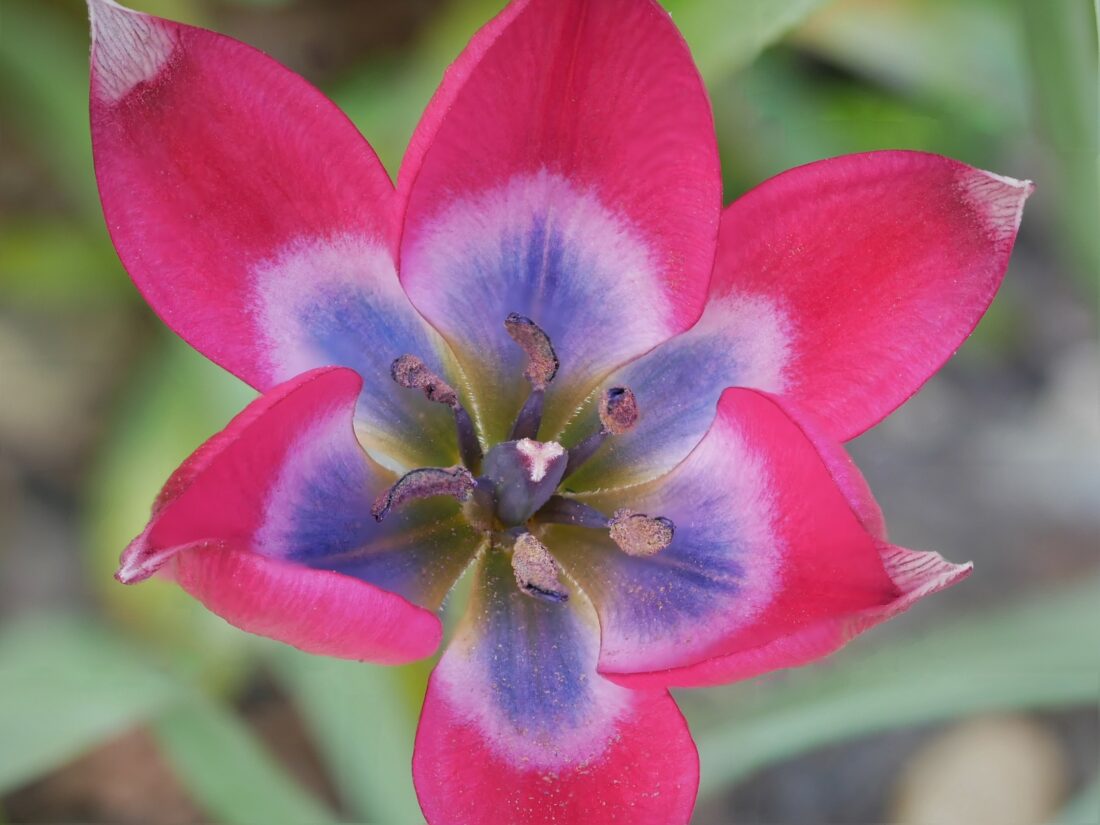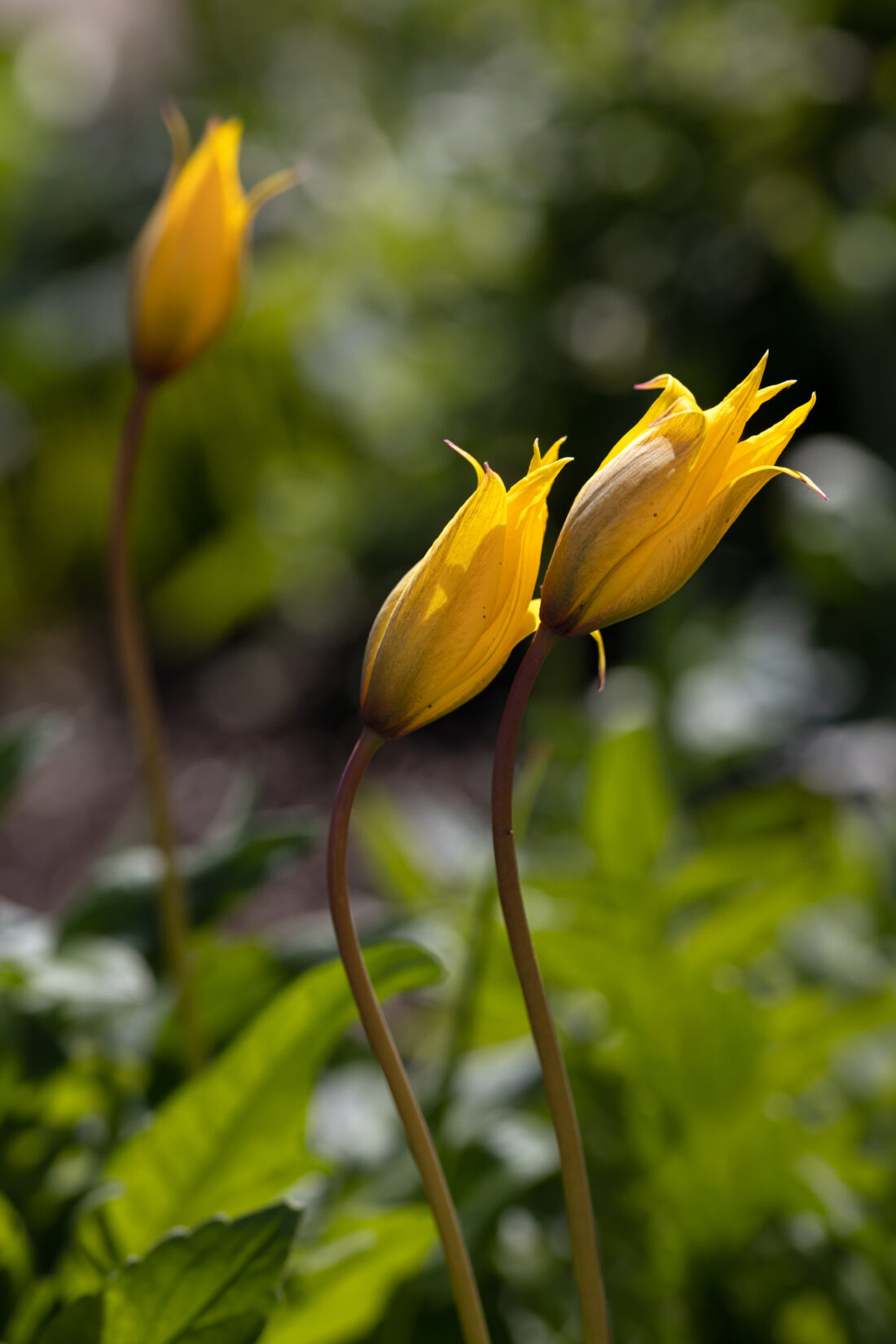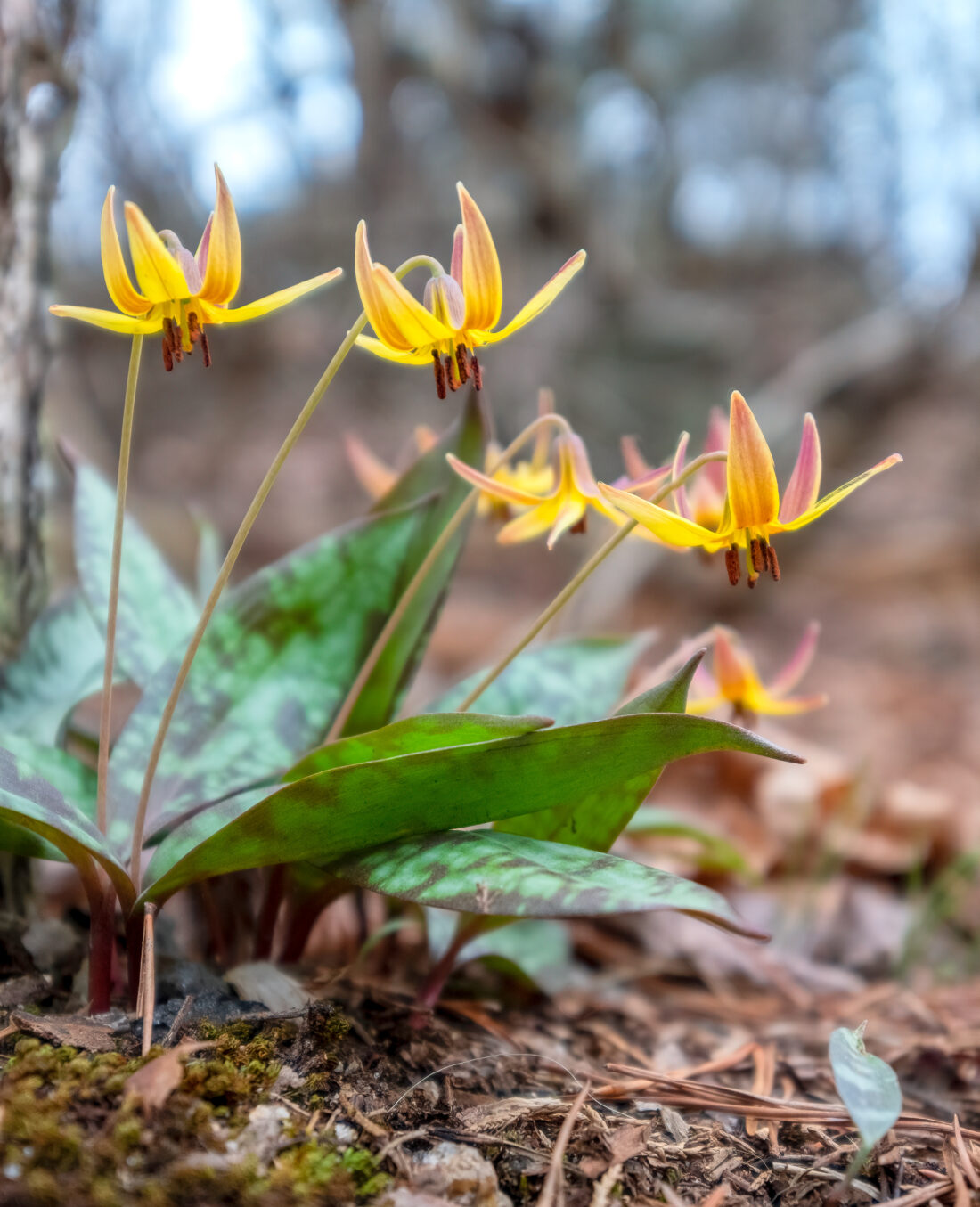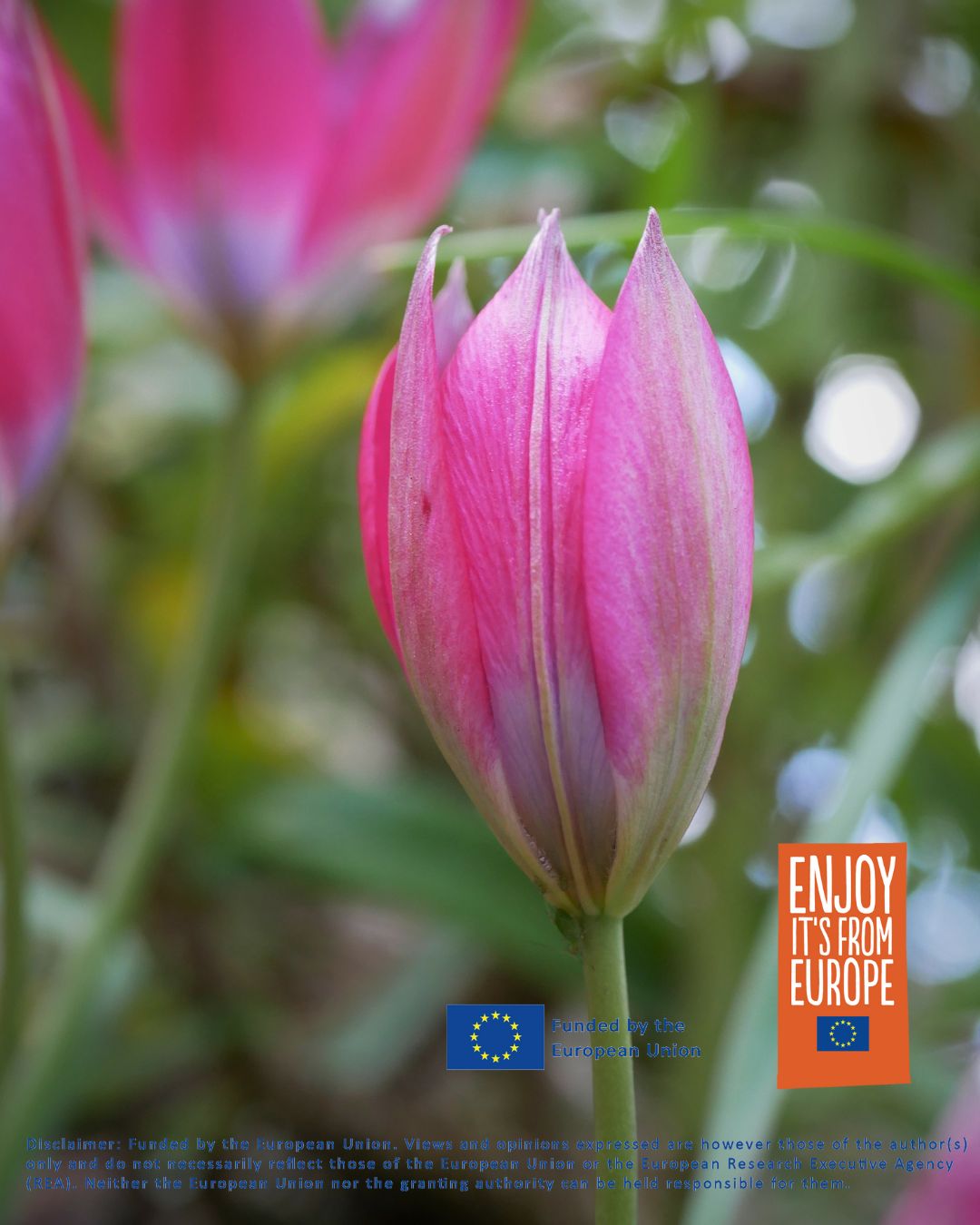I used to be all-in on tulips. Picking colors and shapes to fulfill my spring Kuekenhof dreams. From early April to early May, I’d anxiously await the arrival of those big colorful cups on stems. He drama, that early spring thrill. But I’ve fallen out of love with the high-maintenance heartbreak of planting dozens of big Dutch-style bulbs only to watch them vanish. Whether to squirrels (or whichever creature who follows me around and, like a cartoon, literally digs them up as fast as I plant them) or just…never showing up again.

After not planting standard tulip bulbs for a few years, this year was the first that I had no typical hybrid tulips starting in early April.
But I did have something else. Last fall, I tried a new (to me) kind of tulip. Enter species tulips. These are the wild ancestors of the flashy hybrids we’re all familiar with—smaller, earlier, and (here’s the kicker) often perennial and purportedly less appealing to the critters. I’d read about them, was intrigued, and last fall, I finally tried a few. Not many, just enough to test the waters.
I tried Tulipa humilis (Little Beauty Tulip). They are hot pink with navy blue centers and substantially shorter—basically miniature tulips—than the Darwin hybrid tulips we all know and love.
Observation: First Year Results
These little guys surprised me. My front bed is full of Daffodils, but they are in need of thinning to bring back their floriferous vigor. That is a project I’ll need to do in a few weeks, once the foliage has died back. But among all those leaves, I really enjoyed catching a glimpse of the bright pink of these little dwarf tulips. They were pinker than expected, and I loved the color at this time of year. The grey of a New England Spring calls for colors that can be more assertive and cut through the gloom. They didn’t scream like their showier cousins, but they certainly caught my eye. They glowed. And they looked right nestled among rocks and perennials, like they belonged. I wish I’d planted more.

Hope: Naturalizing or Not?
The real question is: will they come back? Will they clump up and naturalize the way their reputation suggests? I don’t know yet. But I’m invested. This fall, I’m going to plant more and hope I’m building something that gets better each spring.
A few things I learned – they seem to be best in full sun spots with well-drained soil. It seems possible, based on where I planted them and they did well, that they might prefer the rocky soils that have good drainage. This all needs a little more experimentation, but in the areas where I planted them in soils more full of organic matter, these wild tulips didn’t seem quite as happy.
Gardening has always been a long game, but these little tulips feel like an act of gardening faith – a test of patience. Less fireworks, more candlelight. I’m into it. I’m going to look out for a few more wild perennializing tulips and see if they are just as good or better.

Exploring Species Tulips
Species tulips, often termed “botanical tulips,” are the wild ancestors of modern hybrid tulips. They are cherished for their resilience, naturalizing ability, and delicate beauty. Here are some noteworthy varieties to consider:
- I want to try Tulipa sylvestris in the woodland areas of my garden (pretty yellows with nodding heads).
- I researched Tulipa linifolia. If you are interested in trying these types of bulbs, this is one to look into. I’m giving it a pass-through—I just don’t love this shade of red in my garden.
- Tulipa clusiana ‘Lady Jane’: (also known as a lady tulip) Features slender, bicolor petals—rosy-pink on the outside and white inside. Other T. clusiana varieties are also bicolor but in color combos that are a little less appealing to me (white with red, red with yellow, etc).
- Tulipa tarda: A low-growing tulip with star-shaped yellow and white flowers, known for its ability to naturalize well.
- Tulipa bakeri ‘Lilac Wonder’: Boasts lilac-pink petals with a yellow center, adding a soft touch to rock gardens.
- Tulipa humilis ‘Persian Pearl’: Displays vibrant magenta petals with a contrasting yellow center, ideal for early spring color. I think this could be a great addition to the variety I already have.
- Tulipa saxatilis: Known for its fragrant, pinkish-lilac flowers with a yellow base, it thrives in well-drained soils.

Native North American Alternatives
While tulips aren’t native to North America, you can achieve a similar aesthetic with native plants. Trout lilies ae something I’ve played with for a few years. I have one that is very happy growing in the wet soils at the bottom of a downspout. It is also very shaded by a large Kirengeshoma palmata. These are more orchid-like than tulip-like, but they are very happy in partial shade, and as I am thinking more about plants that come back year in and year out, I am thinking more about natives that might work for more reasons than just my enjoyment.
- Erythronium americanum (Trout Lily): A spring ephemeral with mottled leaves and nodding yellow flowers, perfect for woodland gardens. I’m plotting ideas where these are paired with some of the wild tulips and trout lilies. I live in the native range of these plants so hopefully they will thrive in my garden.
- Erythronium albidum (White Trout Lily): Features delicate white flowers and thrives in moist, shady areas.
- Erythronium mesochoreum (Prairie Fawn Lily): Native to the central U.S., it offers pale lavender to white blooms and adapts well to prairie settings.
This is an ongoing experiment—I’ll let you know how it goes (I’ll update next Spring 2026!). In the meantime, if you have tried any of these tulips and have any notes for me (or anyone else who might be reading this), we would all be so appreciative if you shared your wisdom in the comments.
Thanks – Rochelle
More tulips and other bulbs
This post was sponsored by the European Bulb Council and Flowerbulbs.com.

+comments+